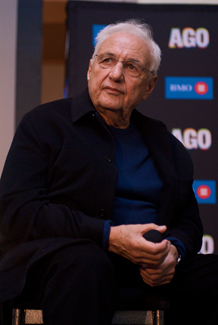 Credit: Smaku
Credit: Smaku
Frank Gehry, the Pultzer Prize winning mastermind architect behind buildings such as Guggenheim Museum in Spain, MIT State Center in Boston, Walt Disney Concert Hall in Los Angeles and many others, has been named the most important architect of our age. His understanding of light, sound, movement, materials and the psychology of human behavior sets him apart from the rest in architecture and design community.
The secret behind Gehry's success lies in the three principles he abides by. As Christian Saylor at UXmag recently pointed out, these principles translate directly into best practices for the web design community. Lets have a look at them.
1. Purpose Before Presentation
Gehry works from the inside outwards, looking at the purpose of the structure before it's presentation. He might think about how sound will travel through the building or how artwork will interact with visitors to the museum.
This brings home a strong lesson—keep in mind how users will use your product throughout the whole design and development process. Gehry was worried about the purpose and the meaning of the building for the people who would enter and use it. Our job as designers is to worry about the purpose/meaning our web apps provide for people using them. What is the purpose and how can we convey in through our designs.
2. Explore and Iterate
Gehry is the master of "failing your way to success."' There is a great quote where he describes the process of finding the right material for the visual skin of the Guggenheim Museum:
We made mockups of stainless steel and in the bad light they went dead. Really dead, and I was frustrated by it. We figured out ways to scratch it to get light into it. We dyed it. We did everything. We even stamped on it. I was in LA in my office and I was very frustrated about it and I was rummaging through the materials file and I found this piece of titanium and I looked at it and I said "nail it to the telephone pole outside and lets see what happens." By some miracle it rained in LA that day and the piece of titanium was golden. This was our eureka moment.
Gehry spent next two years in a steel mill trying to perfect this golden titanium glow:
So after many, many iterations we got it. I've never been able to get it again. Its one-of-a-kind.
Exploration is all about approaching your current design from a different angle. Gehry had a vision for the feeling he hoped to evoke and then iterated again and again to make his material work. When it didn't, he wasn't afraid to open up the question and explore another material in its place, but it was in an effort to achieve that same emotional effect. The lesson here is to stay focused on a goal, but know when to explore alternates or riff on that same detail.
3. Shape and Movement
Gehry breaks down shape and movement into the following points:
- The design presentation that gives the sense of movement with his use of organic forms.
- The movement of people in, out, and through the building.
- The potential energy of the community or individual with which his creations interact.
Every tiny detail matters when building a website. Every tiny detail—the wording, the button color, the imagery all present a certain attitude that either attracts people or pushes them away from the interface. Kevin Hale, the founder of Wufoo, which was recently acquired by SurveyMonkey, gave a great example of this during his soapbox:
The Wufoo team looks at those small moments as a first date with people who come to their website. There are a lot of other places which can make great impressions. The very first email you send them, the account creation process, the first advertisement they'll ever see, the first support request.
Our login link is a tiny little dinosaur, and right next to the login link, when you hover near it it goes "RARRR!" This experience is very memorable. Some of my favorite login pages are those like Wufoo, which have a beautiful login page where they have very pretty vector illustrations. The old Flickr login text said "Get in There!" When you contrast that with Google or Yahoo sign up pages, there is a big personality difference, you don't start off your journey with a smile.
Don't let yourself lose site of your product's purpose, know when to explore and when to drill in and iterate, and pay attention to all those details because they can add up to something great. The lessons of Frank Gehry designing for people in architecture hold up remarkably well on the web and mobile too!